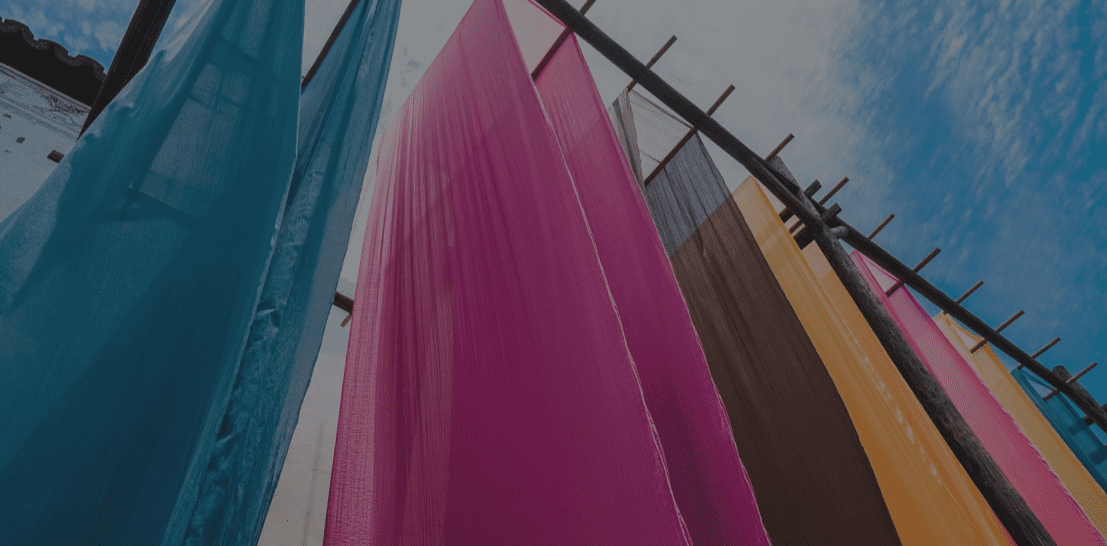The cold truth
Reactive dyes are the family of dyes generally used to dye cotton, viscose, and other cellulosic fibres. However, reactive dyeing requires vast amounts of salt, water and energy. The process is also quite inefficient, leading to low fixation rates (approximately 75 %). This means that repeated rinses are needed to remove the unfixed dye, increasing both water and energy use (as rinse water is often heated). Wastewater produced from reactive dyeing contains high levels of both salt and dye, which is difficult to treat. Cold pad batch dyeing (CPB) is an alternative method of reactive dyeing that uses fewer resources.
With CPB there is no need to apply heat during the process, and no salt or humectants are needed. However, the rate of fixation depends on the ambient temperature, so in countries where there is a big difference between summer/winter temperatures, it is good practice to carry out dye fixation in a heat-regulated room.
The contents of the dye pad trough need to be prepared just before dyeing starts to prevent hydrolysis and to get good levels of dye fixation. This is why the dye solution and alkali solution are usually pumped to the dye trough separately and mixed immediately before dyeing – and there is often the use of a chiller to keep the dye liquors cool.
High-quality adjustable rollers/mangles are needed in order to get uniform dye application and prevent side-to-side variation (resulting in fabric rejections). After dyeing, the fabrics can be washed off, preferably on an efficient counter-flow wash range.
It is necessary to get cold pad-batch dyeing right first time as it is difficult to make amendments to off-shade batches. However, as the dye liquor (without the alkali) is usually prepared in advance of the dyeing process there should be time to do laboratory checks and make necessary adjustments.
Clothing that can be dyed using CPB includes fibres with a cellulosic structure only: cotton, wool, linen, and viscose. Silk and synthetic fibres are not suitable for CPB. The method can be applied to woven and knitted fabrics (the latter need careful preparation). As there is no abrasive processing, smooth fabrics can be obtained without enzyme biopolishing – resulting in stronger fabrics.
Advantages of CPB
Compared to other reactive dyeing methods, such as jet dyeing, CPB offers several benefits:
- Reduced water consumption (more so if counter-flow washing ranges are used)
- Reduced energy consumption, as it is done at room temperature
- higher percentage of dye fixation
- No salt used – resulting in easy dye wash off and no salt being present in the effluent
- Pre-dye checks can be carried out ensuring more fabric is dyed correctly
- Productivity – one CPD machine can dye more fabric than a jet machine
- Better suited to stretch fabrics and knits because it is easier to manage tension control in a small machine
- Fabrics are smoother so no need to bio polish
- Fabrics are stronger than bio polished equivalent
Disadvantages of CPB
Compared to other reactive dyeing methods, such as jet dyeing, the disadvantages of CPB include:
- The dyed fabric production rate is low – requires least 12hours batching time for dye fixation
- Difficult to make amendments to off-shade batches so pressure to get things right first time
- Process not viable unless high-quality machinery is used
- Requires off-line bleaching and wash off which makes planning more complex
- Requires an intermediate drying process after bleaching
- Requires fabrics to have completely uniform moisture and temperature throughout to achieve optimum results
- Ideally requires a chiller for dyes and thermo-regulated room for dye fixation.
REFERENCE: https://www.resourceefficient.eu/en/technology/cold-pad-batch-dyeing-cotton

